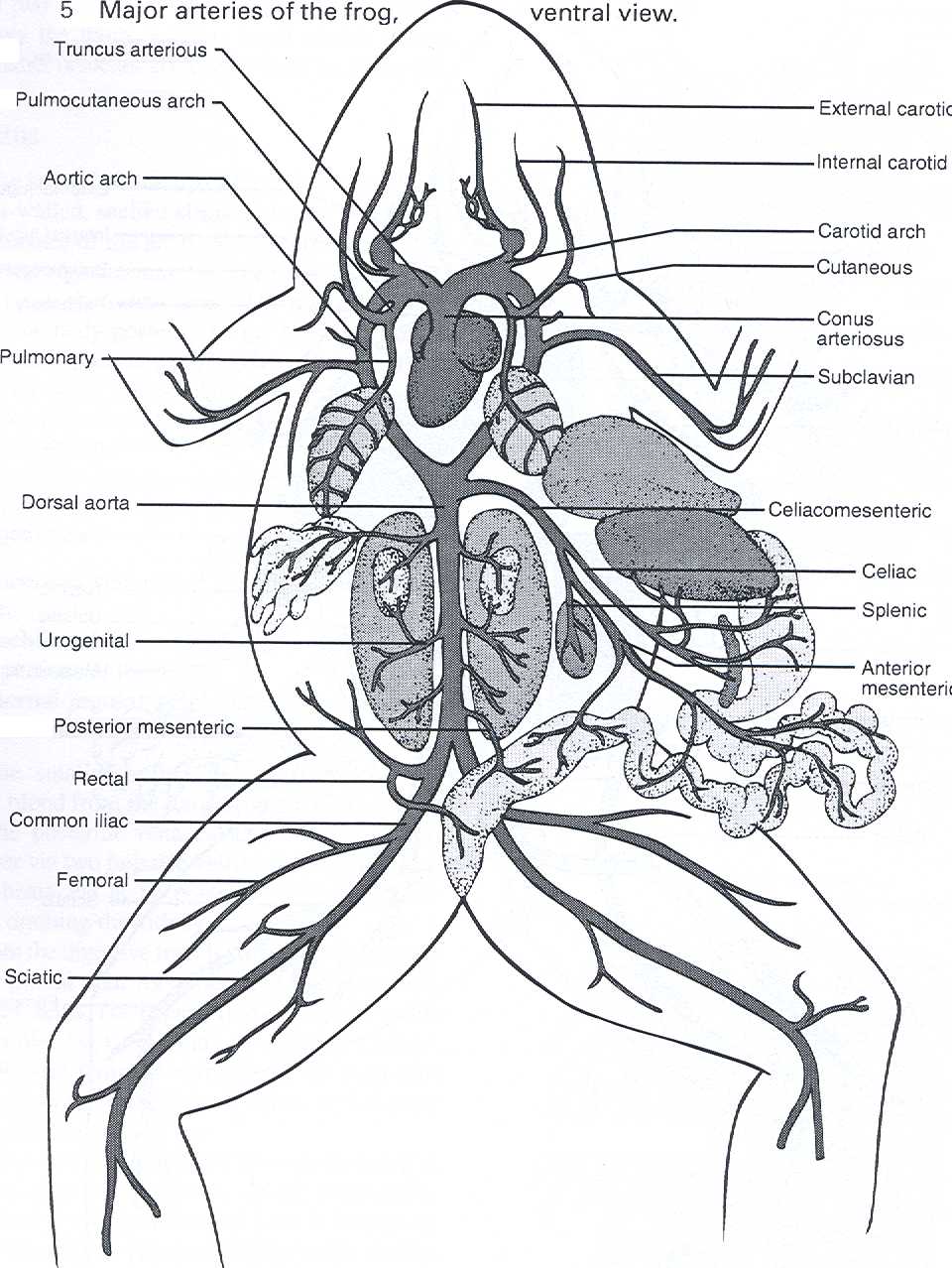
Rinse out the body cavity with water.ĭigestive System 1. If they are present, carefully remove the eggs and the tissue.
#Frog dissection worksheet answers full
If your frog is a female, the body cavity may be full of black eggs and ovary tissue. Fold back the muscle layer and secure it with pins. The sternum, or breastbone, is located between the forelegs. CAUTION: Do not cut too deeply or you will damage the underlying organs. Repeat the incisions you made in steps 7 and 8, this time cutting through the muscle layer. You are now ready to cut through the muscle layer. At the top and bottom of this incision, make transverse cuts towards the forelegs and hind legs. Carefully cut along the midline toward the throat.

#Frog dissection worksheet answers skin
Begin by lifting the belly skin with forceps and inserting the point at the midline near the pelvis. First your incision will be made along the middle of the belly-from the pelvis to the throat. Secure it by placing the pins through the tip of the snout and each of its legs. Place the frog on its back (dorsal side) in the dissecting pan. Now you are ready to open the abdominal cavity. Using your probe, find out where the Eustachian tubes lead.ģ Dissecting the Frog 1. These are the openings to the Eustachian tube opening. On both sides if the gullet, near the jaw hinges, are other openings. Find the gullet (throat), the wide opening that leads to the esophagus. They are located towards the front of the upper jaw, between and slightly behind the internal openings on of the nostrils. Two vomerine teeth can also be found in the upper jaw. The ridges that you feel are maxillary teeth. Gently run your finger along the inside of the upper jaw. Is it attached to the front or back of the mouth? In a live frog, the tongue is sticky and used to catch insects. If you cut the corners of the mouth (about 1-2 cm) with scissors, the mouth will open more easily. Place the frog on its back (dorsal side) in the dissecting pan and pry open its mouth. Look at the thumb pads and try to determine if your frog is a male or a female. Notice the difference in coloring between the belly and the rest of the frog’s body. Because the skin is thin and moist, the frog can breathe directly through its skin as well as with his lungs. These nasal openings, or external nares, found towards the tip of the snout, will close when the frog is under water. Then locate the two openings into the nasal cavity. Behind each eye, find the circular eardrum, tympanum. It also keeps the eye moist when the frog is on land. The third eyelid is a transparent membrane that protects the eye while permitting the frog to see under water. The two outer ones are the color of the frog’s body. Note the difference between the toes of the hind legs and those of the front legs. The forelegs provide balance and cushion the frog when it lands after jumping. The hind legs are strong and muscular and used for jumping and swimming.

Examine the hind and front legs of the frog. Place the frog on its belly (ventral side) in the dissecting pan. _Ģ Dissection Lab Procedures: External Features 1.

Lungs = blue Spleen = gray Kidney = blackĪ. Gall Bladder = green Stomach = orange Pancreas = pink Heart = red Fat body = yellow Liver = purple Small Intestine = dark blue Large Intestine = brown Pre-Lab Procedures: You will start by coloring and labeling the frog diagrams below. Materials (per group) Preserved frog Pair of gloves Dissecting pan In this investigation, you will dissect a frog. Adult frogs can live on land or in water. Tadpoles, or young frogs, are entirely aquatic. Name_ Per_įrog Dissection Lab 2013 Quarter 3 Lab Assessment Background Information Frogs are classified as amphibians or “animals that live a double life.” The name is appropriate because amphibians spend their immature lives in water and their adult lives primarily on land.


 0 kommentar(er)
0 kommentar(er)
